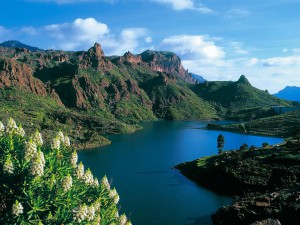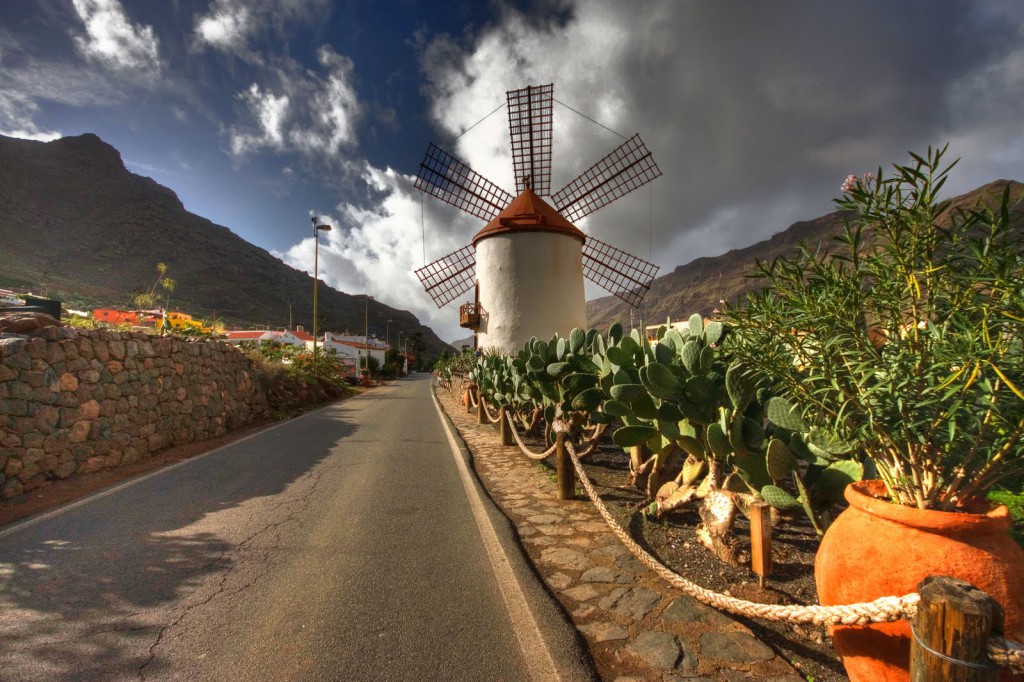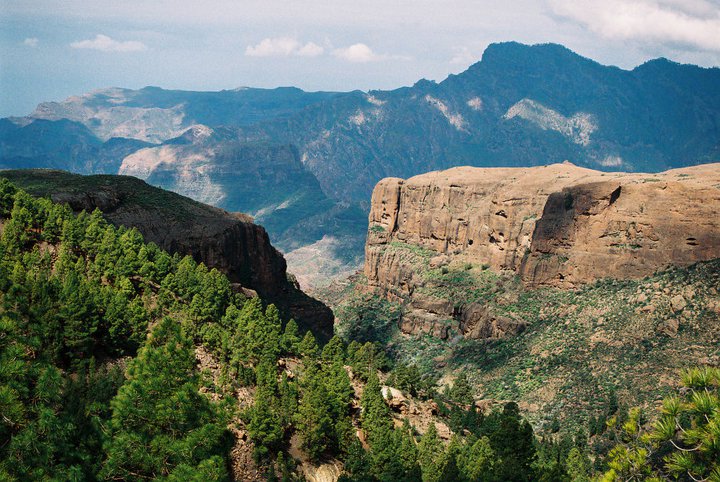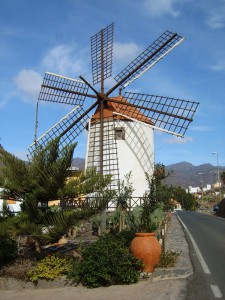Mogan de Gran Canaria
Until today there is still no guarantee how Mogan and Puerto de Mogan arose. To the municipality Mogan belongs the towns Arguineguin, Puerto de Mogan, Puerto Rico, Amadores and Playa de Taurito. The best route for a trip you will find it along the Barranco de Mogan. This road is situated between Puerto de Mogan and Mogan.
Booking.comMogan the forgotten town
Mogán is located 12 km from the port town of Puerto de Mogan. The territory Mogan adjacent to San Bartolome de Tirajana. Revenue comes mostly from tourism, but also from agriculture such as lemons, mango, papaya and banana plantations.
In ancient times was the main source of Mogan tomatoes and salt mills. A landmark and part history of Puerto Rico is the church of “San Antonio” from 1814. The church has a beautiful wood paneling. There are also images of St. Anthony of Padua and the Immaculate Conception.
The village of Mogan was in days gone by actually an artists’ village. The then artists have also left their mark on the town. This can be seen at the many mosaic tiles that here and there find. Mogan itself actually has no art or historical heritage. The village of Mogan would be established in 1833. Initially, to protect themselves against the many attacks by pirate ships. The village is secluded in 1851 was by a cholera epidemic on the island of Gran Canaria.

The provisioning of Mogan with nutrients happened in that time, with small boats, which then docked at the then nonexistent Puerto de Mogan. Under the Franco regime is Mogan during the 2nd world war falling back into isolation. Exports of tomatoes and bananas was then restrained. The population of the village suffered when like other villages in Gran Canaria hunger and poverty.
The beautiful village is not yet developed touristic until today. That gives you the practical means to discover the real life on Gran Canaria with the locals who bear the name “moganeros”. Feel free to take a place on the terrace of the only bar in the village and to enjoy life.
Mogán and the beautiful nature
A few kilometers from the coastline of Puerto de Mogan you can admire the most massive of the southeast. This massive “El Mulato” has an exceptionally beautiful scenery and is of great archaeological value. This whole underlying mountaineous area from Puerto de Mogan to the interior is the “Reserva Natural Integral de Inagua” and “Parque Rural de Nublo“. Here you can see among others the Tabaibales (Euphorbia), a slope between Mogan and Veneguera. When you’re still on a discovery tour, be sure to visit the Veneguera Canyon (Barranco de Veneguera). This nature reserve was formerly before there was a way, the connection between north and south.
The rock formation “Los Azulejos” because of its diversity of colors is very popular with hikers and photographers. Are you going further than you are in the “Parque Natural de Orjeda“. The river “Barranco de Mogan” departs in the mountains of the nature reserve Inagua. Thereafter this river makes a break in “Presa del Mulato” and mouth finally leads into the sea at the height of the fishing port of Puerto de Mogan.
Inagua is a protected area of 3920 hectares since 1994. In the park is located a meeting place for walkers and tourists. Together with Inagua is Oreda and Pajonales known for the mountains and the best preserved pine forests of Gran Canaria. This nature is combined with the majestic canyons and definitely worth your visit.
The fauna and flora is very important for water and soil protection. The forests are also important for maintaining of the bird populations including several endemic endangered species like the blue finch. Here are the pine trees a hiding place for the birds. The entire park is covered by the districts Mogán, Tejeda and San Nicolas de Tolentino.
In the surroundings of Inagua you can pleasant relax and swimming in the dam reservoirs “Embalse de la Cueva de las Niñas” and “Presa de Soria” surrounding by beautiful palm trees. The whole area that I have discovered with you here is in 2005 by UNESCO as “World Biosphere Reserva de Gran Canaria” acclaimed
During the period 2014-2015 has the nature management of Gran Canaria for the purpose of reforestation in the southern region of the island 26 000 new plants installed. Especially pines and junipers been planted on softly undulating hillsides. In this natural area you will find especially pine, fir and spurge.
Mogan and the Windmill
The village Mogán (folder) you can reach by car or mountain bike when you follow the channel “Barranco de Mogan” from the GC-200. Mogan is situated 7 km from Puerto de Mogan. On this way you can always follow the river just before the village of Mogan take a break at the “Molino de Viento“, what means the Windmill. From Mogan you can also walk on foot to the windmill, this is just a few hundred meters.
This authentic copy of a flour mill with a diameter of 12 meters, heritage and was restored in 1998 .. For the villagers, the windmill known as the “burned windmill. The built in the 19th century mill has gotten this name because then local Parish Priest out of revenge had crossed the Windmill on fire. By rebuild has the mill running on steam in 1930. Using public transport with you can take bus number 38 to Mogán and the windmill. Map
Puerto de Mogan
This quaint harbor town designed by the artist Ralph Neville, is located in the most western part of the south of Gran Canaria. Puerto de Mogan (map) is actually the beach and the marina of the municipality of Mogán and about 180 years old.
Climatically is Puerto de Mogan well located. It can even count on more hours of sunshine than, say, Maspalomas or Playa del Ingles. Because of the many channels that themselves make a way between the houses of Puerto de Mogan in popular speech “The Venice of Gran Canaria” called. The small fishing port is very popular among photographers. More info about Puerto de Mogan …
How do you reach Mogán
Mogan can be reach you today by car via the motorway GC-1 or via the coastal road C-500 and C-812 which is basically the same way. The view is beautiful with regular stunning view of the Atlantic Ocean. A good alternative is obviously a taxi
For a short visit to the village of Mogan, take bus No. 84. In total has Global Company 6 different bus routes to and from Puerto de Mogan. The bus station is located in Avenida de Las Artes



